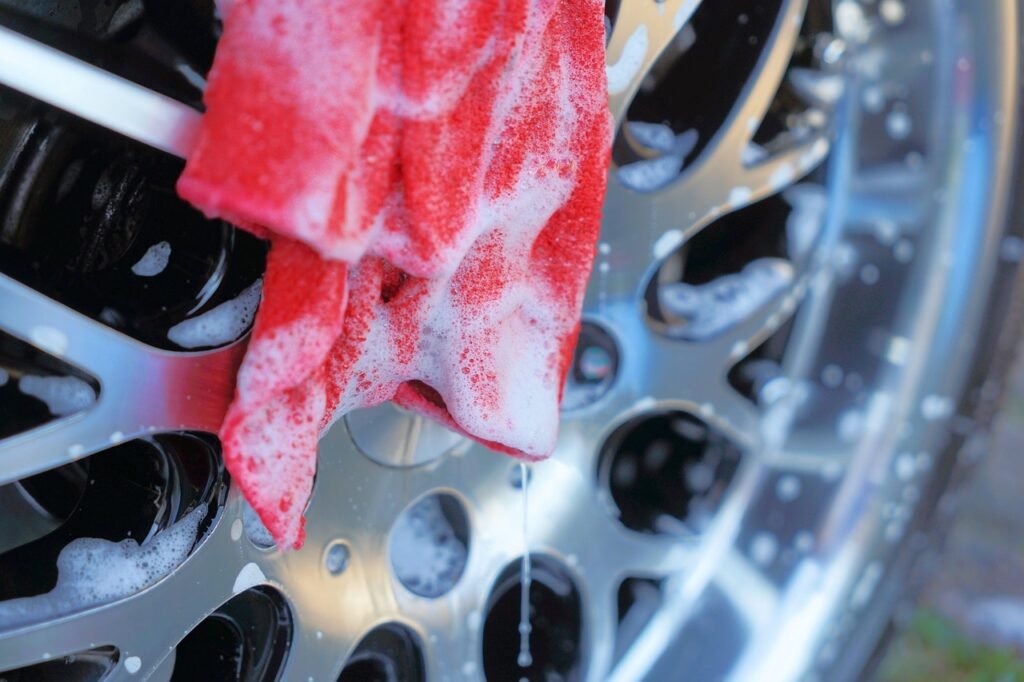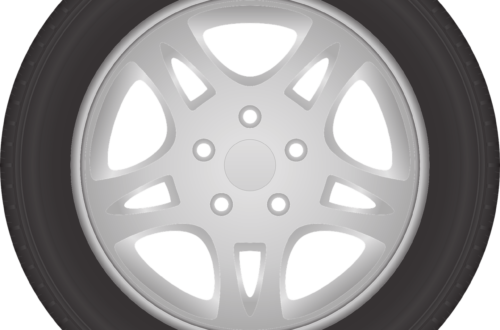Whether you’re a seasoned car enthusiast or a casual driver, understanding the best practices for tire rotation is crucial to ensuring optimal performance and longevity for your vehicle. In this article, we will uncover the secrets behind mastering the art of tire rotation, giving you the knowledge and confidence to expertly maintain your tires. Discover the importance of proper rotation, learn when and how often to rotate your tires, and uncover the various rotation patterns that will maximize the lifespan of your tires. By following these best practices, you’ll not only enjoy a smoother ride but also save money in the long run by increasing the longevity of your tires. So, let’s dive in and uncover the secrets to achieving tire rotation mastery!

This image is property of pixabay.com.
Importance of Tire Rotation
Tire rotation is a crucial aspect of regular vehicle maintenance that is often overlooked. By regularly rotating your tires, you can experience various benefits, including improved tire performance, extended tire lifespan, enhanced safety, and improved fuel efficiency.
Improved Tire Performance
Tire rotation plays a significant role in enhancing tire performance. As you drive, the weight distribution on your tires can become uneven due to factors such as braking, cornering, and acceleration. This uneven weight distribution can lead to irregular tire wear and decreased performance. However, by rotating your tires regularly, you can ensure that the wear is distributed evenly across all tires, resulting in improved traction, handling, and overall performance.
Extended Tire Lifespan
Tires are a significant investment, and it’s essential to maximize their lifespan. Regular tire rotation helps to extend the life of your tires by promoting even wear. When tires wear out unevenly, you may have to replace them sooner than necessary, which can be costly. By rotating your tires, you can ensure that they wear evenly and last longer, saving you money in the long run.
Enhanced Safety
Ensuring the safety of you and your passengers should always be a top priority when it comes to vehicle maintenance. Proper tire rotation can significantly contribute to your safety on the road. Unevenly worn tires can significantly impact your vehicle’s handling and stability, increasing the risk of accidents. By rotating your tires regularly, you can maintain consistent tread depth across all tires, promoting optimal traction and stability, even in challenging driving conditions.
Improved Fuel Efficiency
In today’s world, fuel efficiency is not only better for the environment but also for your wallet. Unevenly worn tires can lead to increased rolling resistance, which requires your vehicle’s engine to work harder, ultimately reducing fuel efficiency. Tire rotation helps to distribute the wear evenly, ensuring that your tires have consistent tread depth and reducing rolling resistance. By improving fuel efficiency, tire rotation can save you money on fuel costs and reduce your carbon footprint.
When to Rotate Your Tires
Now that we understand the importance of tire rotation let’s explore when it should be done. Several factors can help you determine when to rotate your tires, including mileage interval, visual inspection, uneven tread wear, and vehicle manufacturer recommendations.
Mileage Interval
One of the most common methods to determine when to rotate your tires is based on mileage. Generally, most experts recommend rotating your tires every 6,000 to 8,000 miles. This interval provides a good balance between ensuring even wear and preventing excessive wear.
Visual Inspection
Apart from following a set mileage interval, it is essential to visually inspect your tires regularly. Inspecting your tires allows you to identify any signs of uneven wear, such as cupping, feathering, or scalloping. If you notice any of these signs, it is recommended to have your tires rotated regardless of the mileage interval.
Uneven Tread Wear
Uneven tread wear is a common indication that your tires need to be rotated. If you notice that some tires have significantly more wear on one side compared to the other, it’s time to rotate them. This uneven wear can be caused by various factors, such as improper wheel alignment or suspension issues. Rotating your tires can help address the issue and prevent further uneven wear.
Vehicle Manufacturer Recommendations
It is always a good idea to consult your vehicle’s owner’s manual for specific recommendations from the manufacturer regarding tire rotation. Vehicle manufacturers often provide guidelines on when and how to rotate tires based on the specific make and model. Following these recommendations will ensure that you maintain your warranty and optimize the performance and longevity of your tires.
Types of Tire Rotation
Tire rotation involves moving each tire to a different position on your vehicle to ensure even wear. There are various tire rotation patterns that mechanics use, depending on the type of vehicle and tire wear patterns. Let’s explore some of the common types of tire rotation patterns:
Forward Cross Rotation
The forward cross rotation pattern involves moving the front tires straight back and swapping the rear tires diagonally. This pattern is commonly used for front-wheel-drive vehicles to help equalize wear between the front and rear tires.
Rearward Cross Rotation
The rearward cross rotation pattern is essentially the reverse of the forward cross rotation pattern. In this pattern, the rear tires are moved straight to the front, while the front tires are swapped diagonally to the rear. Rear-wheel-drive vehicles often benefit from this rotation pattern.
X-Pattern Rotation
The X-pattern rotation is suitable for vehicles with non-directional tires, which means that the tire tread pattern allows for bi-directional rotation. In this pattern, the front tires are crossed and moved straight to the rear, while the rear tires are crossed and moved straight to the front. This pattern helps to even out wear and promote consistent performance.
Side-to-Side Rotation
The side-to-side rotation pattern involves moving the tires on one side of the vehicle to the opposite side without changing their direction. This pattern is primarily used for vehicles with different-sized tires on the front and rear axles. By moving the tires side to side, this rotation pattern promotes even wear and helps maintain balanced performance.
Proper Tire Rotation Techniques
Performing a proper tire rotation involves following specific techniques to ensure the best results. The following tips will help you execute a successful tire rotation:
Check the Owner’s Manual
Before attempting to rotate your tires, always consult your vehicle’s owner’s manual for specific instructions and recommendations. Different vehicles may require specific rotation patterns or have restrictions on tire placements. Following the guidelines outlined in the manual will help you achieve optimal results.
Use the Correct Tools
When rotating your tires, it is crucial to use the correct tools to ensure safety and effectiveness. A good quality jack and jack stands are essential for lifting and supporting your vehicle securely. Additionally, having a torque wrench will enable you to tighten the lug nuts to the manufacturer’s recommended torque specifications, preventing under or over-tightening.
Ensure Adequate Tire Tread Depth
Before rotating your tires, it is essential to check the tread depth. Uneven or excessively worn tires should not be rotated as they can compromise the safety and performance of your vehicle. If your tires are nearing the minimum tread depth, it may be time to consider replacing them.
Follow the Recommended Rotation Pattern
As mentioned earlier, different vehicles and tire types require specific rotation patterns. It is crucial to follow the recommended pattern as outlined in the owner’s manual or by a knowledgeable mechanic. Adhering to the correct rotation pattern will help ensure even wear and maintain optimal performance.

This image is property of pixabay.com.
DIY Tire Rotation Steps
Performing a tire rotation yourself can save you money and give you a sense of accomplishment. Here are the steps to perform a DIY tire rotation:
Park the Vehicle on a Level Surface
Start by parking your vehicle on a level surface and engaging the parking brake. This will ensure stability and minimize any chances of the vehicle rolling during the rotation process.
Loosen Lug Nuts Before Lifting Vehicle
Before lifting the vehicle, use a lug wrench or a breaker bar to loosen the lug nuts on each tire. It is essential to do this while the tires are still on the ground to prevent them from spinning.
Secure Vehicle with Jack Stands
Next, locate the recommended lifting points for your vehicle, as outlined in the owner’s manual. Use a hydraulic jack to lift the vehicle, and once it is off the ground, place jack stands under the recommended points for additional stability. Double-check that the vehicle is secure on the jack stands before proceeding.
Remove and Reinstall Tires According to Rotation Pattern
Following the recommended rotation pattern, remove each tire from its original position and reinstall it in the new position. Use the torque wrench to tighten the lug nuts to the manufacturer’s recommended torque specifications. Once all tires have been rotated, carefully lower the vehicle back onto the ground and double-check the lug nuts for proper tightness.
Common Mistakes to Avoid
While tire rotation is a relatively simple process, there are common mistakes that should be avoided to ensure optimal results and safety.
Mixing Tire Types
It is essential to avoid mixing different tire types or sizes during the rotation process. Each tire has a specific tread pattern and wear characteristics, and mixing different tires can lead to imbalanced performance and compromised safety. Always use tires that are the same type, size, and have a similar tread pattern on each axle.
Incorrect Rotation Patterns
Using the wrong rotation pattern can result in uneven wear and decreased tire performance. Always consult the owner’s manual or seek professional advice to ensure that you are following the correct tire rotation pattern for your specific vehicle.
Skipping Tire Rotation
Regular tire rotation is crucial for maintaining even wear and maximizing tire lifespan. Skipping tire rotation altogether can lead to significant imbalances in tire wear, causing unsafe driving conditions and premature tire failure. Always adhere to the recommended rotation intervals to ensure proper tire maintenance.
Over/Under Torquing Lug Nuts
Properly torquing the lug nuts is critical for maintaining tire safety and performance. Over-tightening can lead to stripped bolts or studs, while under-tightening can result in loose tires and potential accidents. Always use a torque wrench to tighten the lug nuts to the manufacturer’s recommended torque specifications.

This image is property of pixabay.com.
Benefits of Professional Tire Rotation
While DIY tire rotation can be a rewarding task, there are several benefits to having your tires professionally rotated:
Expertise and Experience
Professional mechanics have extensive knowledge and experience in tire rotation techniques. They can assess your tires and recommend the best rotation pattern and interval based on your specific vehicle and driving habits.
Inspection of Other Components
When you take your vehicle to a professional for tire rotation, they can also inspect other components such as brakes, suspension, and alignment. Identifying any potential issues early on can prevent further damage and ensure your vehicle is in optimal condition.
Proper Torqueing of Lug Nuts
Professional mechanics have access to high-quality tools and equipment, including torque wrenches, to ensure the lug nuts are tightened to the correct specifications. This minimizes the risk of under or over-tightening and helps maintain safe driving conditions.
Efficiency and Time-Saving
Tire rotation can be time-consuming and physically demanding for those without experience or proper tools. Taking your vehicle to a professional allows you to save time and effort, ensuring that the job is done quickly and efficiently.
Signs of Improper Tire Rotation
It is important to recognize the signs of improper tire rotation to address any issues promptly. Some common signs include:
Uneven or Excessive Tread Wear
One of the clear indications of improper tire rotation is uneven or excessive tread wear. If you notice that the tread is significantly more worn on one tire compared to others, it could be an indication that the tires were not rotated correctly. Addressing this issue promptly will help prevent further damage and extend the overall lifespan of your tires.
Vibration or Shimmying While Driving
If you experience vibrations or a shimmying sensation while driving, it may be due to improperly rotated tires. Unevenly worn tires can cause imbalances that result in vibrations at certain speeds or when cornering. Having your tires inspected and rotated by a professional can help address this issue and restore a smooth driving experience.
Vehicle Pulling to One Side
Another sign of improper tire rotation is when your vehicle pulls to one side while driving. This could be due to uneven wear on the tires, affecting the vehicle’s alignment. A professional tire rotation can help rectify this issue and improve the vehicle’s stability and overall handling.
Uneven Tire Pressure
If you notice inconsistencies in tire pressure across your tires, it may be a sign of improper tire rotation. Uneven wear can affect the tire’s ability to maintain consistent air pressure. Regularly checking and adjusting your tire pressure, in addition to proper rotation, can help prevent this issue.
Tire Rotation Frequency
The frequency of tire rotation depends on various factors, such as mileage, time interval, manufacturer recommendations, and driving habits. Here are some general guidelines to consider:
Every 6,000 to 8,000 Miles
As mentioned earlier, a typical tire rotation interval is every 6,000 to 8,000 miles. This mileage range strikes a balance between achieving even wear and preventing excessive wear.
Every 6 Months to 1 Year
For drivers who cover fewer miles per year, it is recommended to rotate their tires every six months to one year. This interval ensures that the tires wear evenly, even with infrequent driving.
Following Manufacturer Recommendations
Always consult your vehicle’s owner’s manual for manufacturer-specific tire rotation recommendations. Each vehicle model may have different requirements, and adhering to the manufacturer’s guidelines will help optimize tire performance and longevity.
Based on Driving Habits and Conditions
If you frequently drive on rough roads, carry heavy loads, or engage in aggressive driving, the recommended rotation interval may be shorter. Driving habits and conditions can significantly impact tire wear, and adjusting the rotation frequency accordingly will help maintain optimal performance and safety.
Conclusion
Mastering the art of tire rotation is an essential aspect of vehicle maintenance. By following the best practices outlined in this article, you can ensure improved tire performance, extended tire lifespan, enhanced safety, and improved fuel efficiency. Whether you choose to perform DIY tire rotation or seek the assistance of a professional, regular maintenance is the key to maximizing tire lifespan and optimizing overall performance. Remember to consult your vehicle’s owner’s manual, adhere to recommended rotation patterns, and address any signs of improper wear promptly. By staying proactive and taking care of your tires, you can enjoy a safe and smooth driving experience for years to come.





